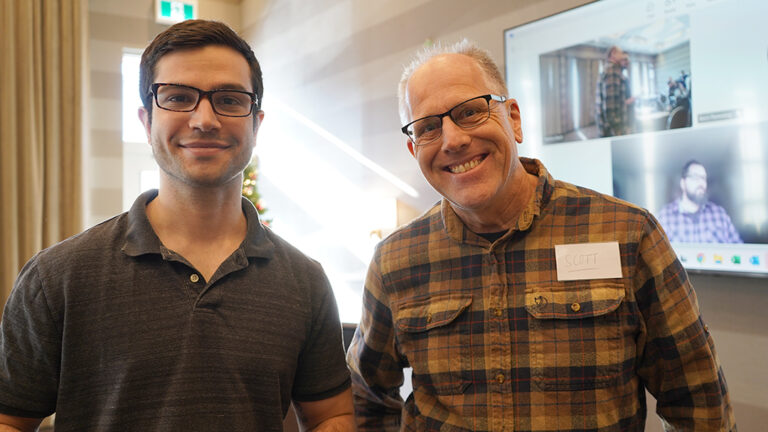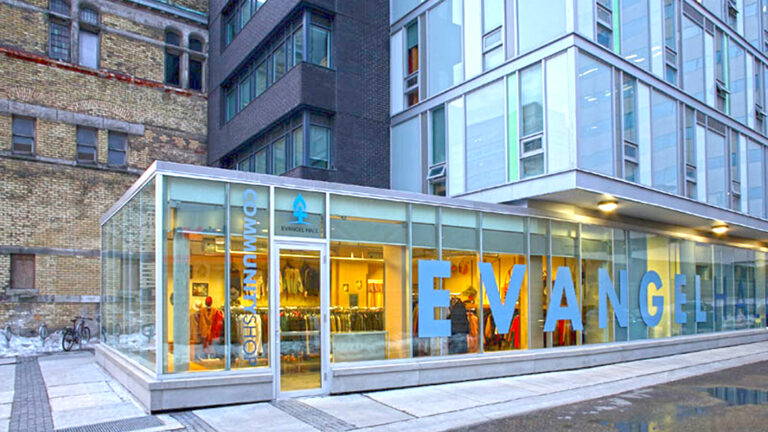Thanks in part to a $50,000 grant from the Centre, Hamilton East Kiwanis Non-Profit Homes and Victoria Park Community Homes are joining forces on a housing development that will see 367 affordable rental units built in Hamilton, Ont. They are experimenting with a new collaborative model that will allow smaller and niche-housing providers to build on their strengths and capacities to better compete with the private sector.
Nordic countries often dominate global happiness and well-being surveys. From Swedish Lagom (just right) and Danish Hygge (comfort) philosophies to urban planning and minimalist house design, they seem to have mastered the recipe for better, happier living. But it is perhaps the Nordic model’s approach to community housing and homelessness that deserves an in-depth look.
Take Finland, for example. It became the first country to adopt a national Housing First approach. Convinced that a home without preconditions, such as sobriety, is the building block to affordable housing for all, the Finns were able to eradicate homelessness. This philosophy has already made its way to non-profits across Canada.
In Denmark, social housing accounts for over 20% of the housing sector. Known for its strong focus on tenant democracy, its residents participate in the running the social estates. This is like the cooperative model in Canada, where members join committees and actively participate in the management and maintenance of the co-op.
The focus on collaboration does not end there: Independent of the government, while bolstered by financial support and policy reforms, Danish social housing is strengthened by hundreds of non-profit housing associations.
Although Denmark and Finland seem far away, inspirational ideas travel easily.
Particularly when they are built around principles of inclusion, participation and collaboration—values espoused and promoted by the Centre.
It’s always exciting to fund projects that push boundaries and prioritize collaboration: the Centre was pleased to award $50,000 to the Collaborative Development Business Case project, which proposes a new way to work collaboratively on affordable housing developments—without having to merge or create a land trust.
Two heads are better than one
Hamilton East Kiwanis Non-Profit Homes and Victoria Park Community Homes, among the largest non-municipal social housing providers in Ontario, have joined forces on a new housing project. Setting what they hope to be a trend in the community-housing sector, they have jointly purchased 7.5 acres of land in Hamilton where they plan to develop and operate 367 affordable rental units.
Community Housing Transformation Centre program manager Amy Bolt is excited about what this initiative means for the sector.

“This is an example of how organizations can work together without having to consolidate or merge, they can collaborate on a per-project basis. This project can open a pathway for further integration and collaboration in the sector,” she notes.
The Centre’s grant will certainly get the ball rolling: it will cover the fees associated with business consultants, legal professionals and financial and tax consultants needed to find the right corporate structure that meets the project’s objective.
“This is such an exciting win to keep these lands in the public domain,” says Lori-Anne Gagne, CEO of Victoria Park Community Homes. “Having two non-profits work together means we can go well beyond the affordability minimums required by the city, all with the intention to deliver 100% affordability, in perpetuity.”
But the impact goes beyond that—there is a huge potential for knowledge-sharing.
A blueprint for a new way to collaborate
“One of the most significant barriers to new housing development for non-profit organizations is the lack of internal capacity,” says Brian Sibley, executive director of Hamilton East Kiwanis Homes. “Leveraging the social and financial capital across multiple organizations creates opportunities to incubate new housing projects while limiting the risk to a single organization.”
The non-profit housing sector is made up of organizations of varying sizes and capacities. Organizations wishing to invest in creating new affordable housing stock have generally found themselves developing on a small scale and competing for limited funds—a costly, inefficient and time-consuming process.
This means that it becomes difficult for niche providers to develop new housing in an economical way. That is why a project like this is necessary, according to Bolt.
“Mergers are not always the answer, it is good to have smaller players who are more niche and serve a distinct demographic or provide a particular service, like working with homeless youth, the LGBTQ+, Indigenous Peoples or women in need of supportive services. Also, combining different management perspectives can make all the pieces of the puzzle fit, while providing unexpected, transformational insights.”
When this project comes to fruition, it will serve as a blueprint for other small housing providers to collaborate and develop new affordable housing stock, and encourage co-investment, co-development, and cooperation.
Hamilton East Kiwanis and Victoria Park believe the path forward relies on collaboration within the sector, not competition. A sentiment shared at the Centre.
“The community housing sector accounts for about 3% of the housing market, and to grow, working together is essential,” Bolt adds.



